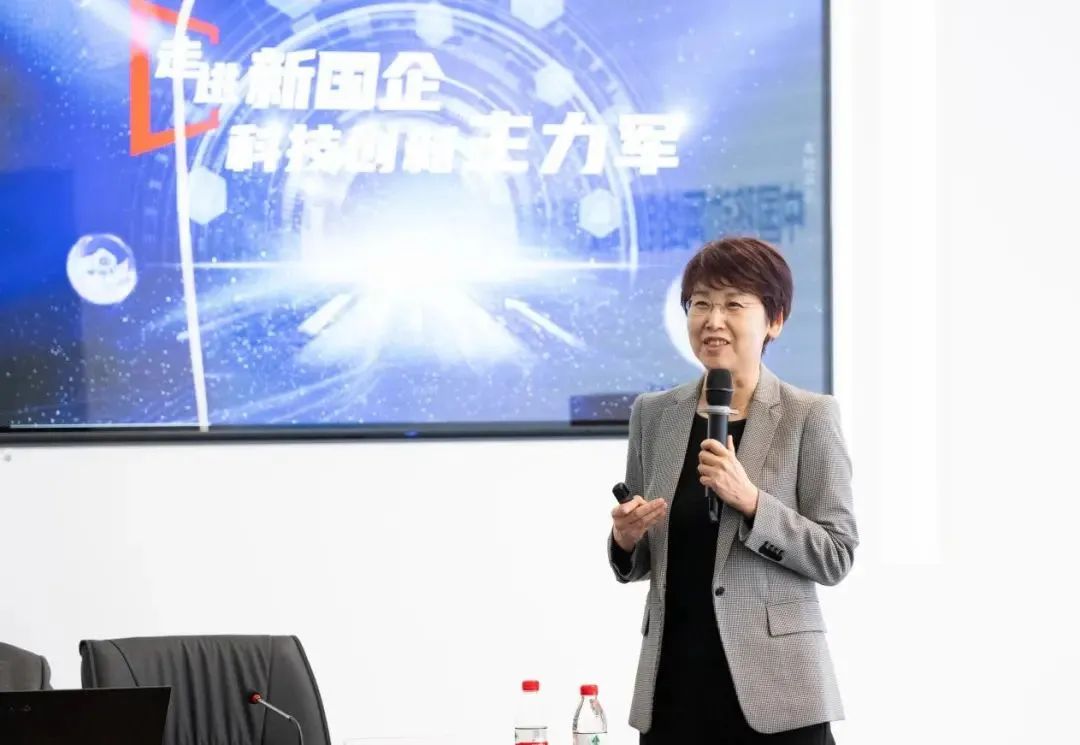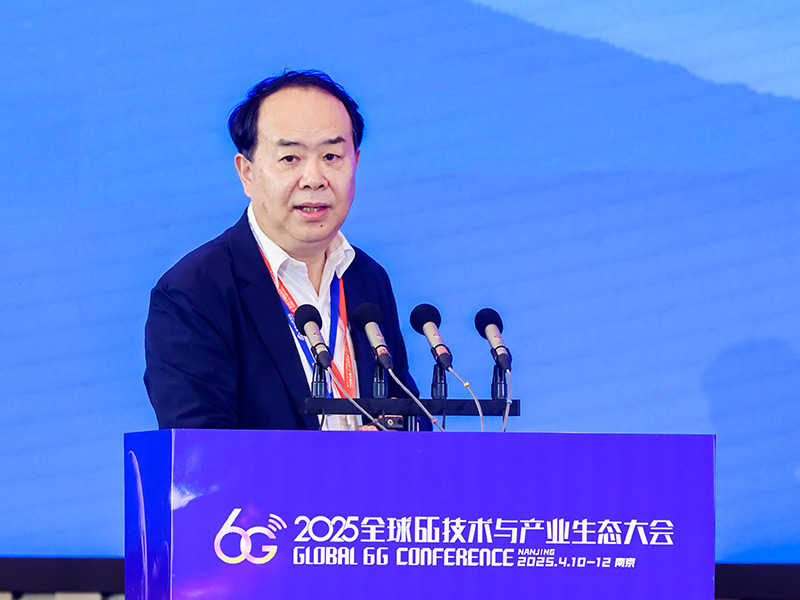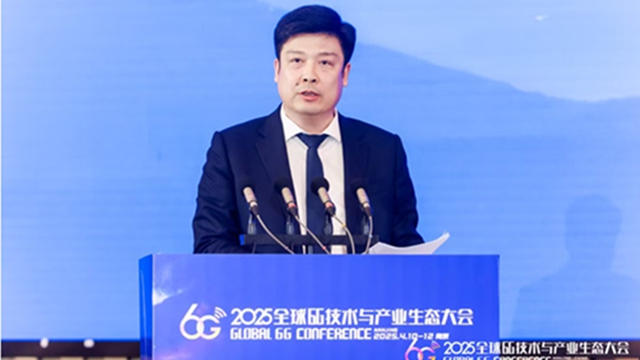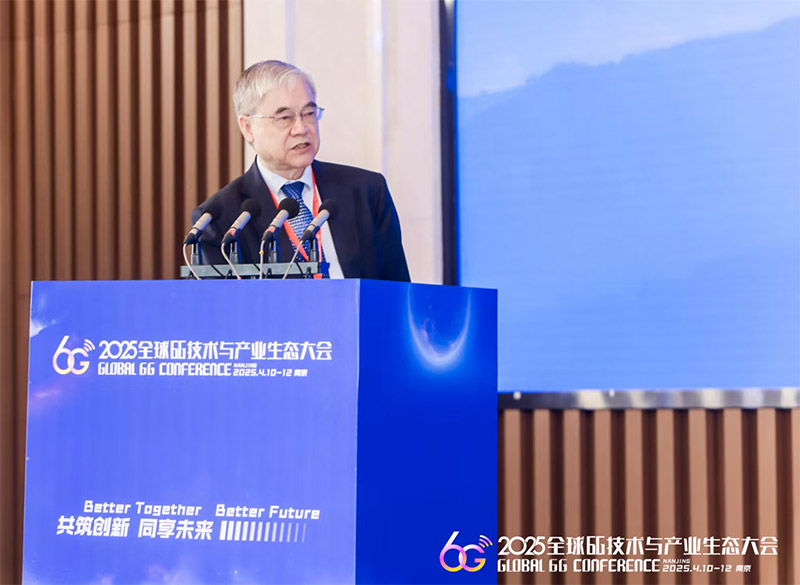6G洞见 | Prof. Papadias:6G产学研用尽早合作,有助于将研究成果最大化
面向6G,空天地一体化的网络面临着通信环境复杂不确定、异构网络体系差异大、多维资源稀疏高动态、海量业务需求多样化等难题,低空经济发展热潮也进一步对网络的通感一体、定位与导航、监控与管理、安全等能力提出了更高的要求。
大会前夕,“空天地一体化与数字低空”平行会议联合主席、希腊美国学院(ACG)副院长、Constantinos B. Papadias教授通过视频表示对参加此次大会充满期待。
同时,Constantinos B. Papadias教授也参与了大会“6G洞见”栏目访谈,他着重提到,6G产学研用尽早合作,有助于将研究成果最大化。
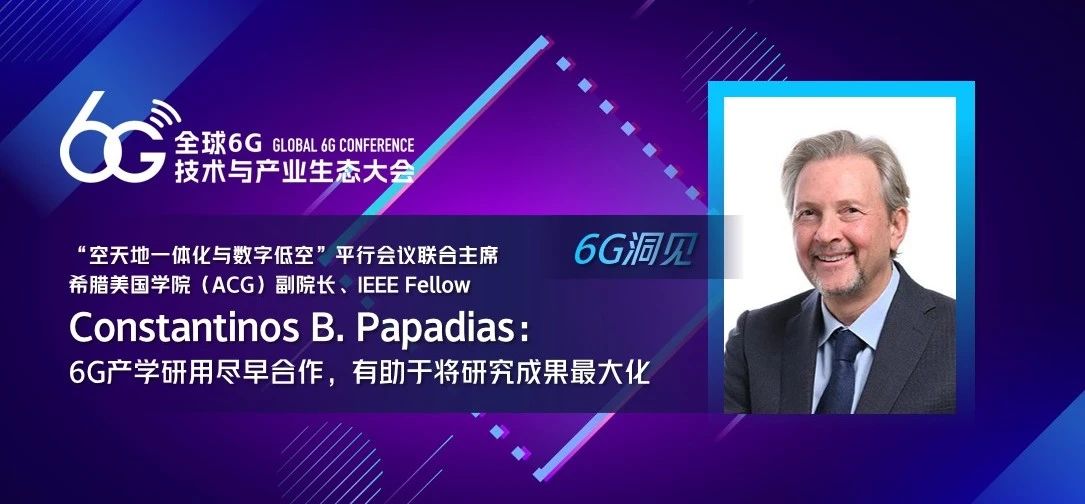
Q1:Since last year, a major focus of the 6G conference has been the idea of "Defining 6G Together Across Industries". This concept emphasizes not only the integration of core communication technologies with AI, computing power, and sensing, but also cross-sector collaboration to ensure the future 6G networks effectively serve industry needs. How do you interpret this trend of "cross-industry collaboration in defining 6G"? Have you already explored or engaged in any cross-sector collaborations related to your research? If so, could you share some insights?
Prof. Papadias:The proliferation of technologies that will enable 6G (such as the ones mentioned above, but also others, such as reconfigurable intelligent surfaces, flexible antenna systems, non-terrestrial networks, etc.) does not only push the boundaries of each domain, but also brings together different technology sectors. A prime example is ISAC technology (integrated sensing and communications), which brings together the communication and the radar communities. Another one is liquid antenna systems, which bring together the domains of fluid dynamics, antenna systems, and electronics. Cross-sector collaboration also takes place between different industries, such as the automotive, radar and mobile network industries; UAV and wireless; satellite, other non-terrestrial and terrestrial; energy utilities and cellular networks, etc. These are brought together not only because of the presented opportunities, but also because of increased network / application / end-user requirements, e.g. regarding energy footprint, reduced cost, ubiquitous coverage, etc.
My recent research in energy-neutral aerial base stations through EU MSCA Project PAINLESS is an example where wireless and energy experts had to join forces. My ongoing research in ISAC for automotive applications, under EU MSCA project ISLANDS brings together experts from the mobile and the automotive communities. Another example, from many years ago, was that of the collaboration of civil engineers with wireless engineers in EU MSCA Project SMARTEN, for structural monitoring via wireless sensors powered by the vibration of the monitored structure.
Q2:This year's conference places particular emphasis on incorporating industry-oriented thinking at the earliest stages of 6G research. The goal is to ensure innovations transition smoothly from university or research institute laboratories to the market, achieving genuine industry application. From your perspective, what are the most significant challenges in moving 6G technologies from academic and research settings into practical industrial implementation? Could you share some insights or experiences from your own research regarding efforts or successes in bridging laboratory innovation with industry applications?
Q3:In the future, mobile communication will evolve from ground-based 2D networks to integrated 3D networks that combine air, space, and ground. This requires addressing the issue of the integration of ground-based and airborne networks, as well as the problem of performance constraints after network integration. How do you view this issue?
Prof. Papadias:In some ways, 3D wireless networks are already a reality – think for example of a smartphone that connects both to a terrestrial base station for 5G connectivity and to several satellites for navigation. The need to provide ubiquitous connectivity not only to humans, but also to machines (e.g. to wireless IoT nodes in remote / inaccessible areas), as well as the increasing need to connect flying objects (such as Unmanned Aerial Vehicles, high altitude platforms (HAPs), commercial airplanes, both to the ground and to satellites, will enhance this trend. The big challenge will be to integrate all these nodes in a single network, that will be of course very powerful but also complex due to the performance constraints that you mentioned and several other issues of compatibility, provisioning and operation.
My view is that we will see a multi-tiered approach, where each terrestrial or aerial segment will play its own role, within its capabilities and limitations, and where, possibly, some tiers will collaborate with others in a dynamic way, based on the required application or service.


